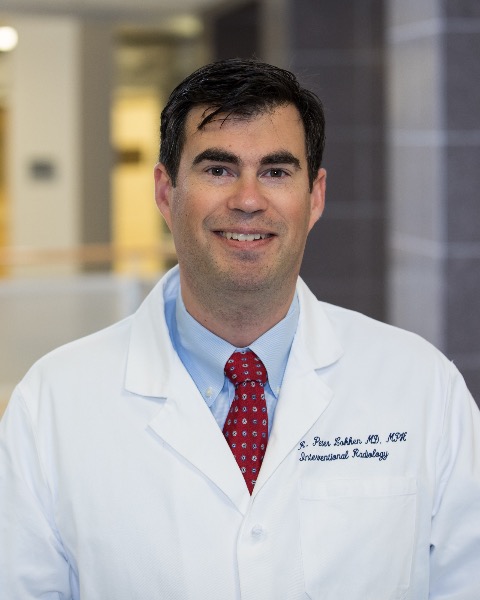Interventional Oncology
Socioeconomic and Survival Analysis of Radioembolization in Patients with Intrahepatic Cholangiocarcinoma: A Propensity Score Adjusted Analysis

Xiao Wu, MD (she/her/hers)
Resident Physician
University of California, San FranciscoDisclosure(s): No financial relationships to disclose
- MH
Michael B. Heller, MD
Health System Clinician
University of California, San Francisco 
R. Peter Lokken, MD, MPH, FSIR (he/him/his)
Associate Professor of Clinical Radiology
UCSF Department of Radiology and Biomedical Imaging- NF
Nicholas Fidelman, MD
Professor
University Of California San Francisco - AL
Alexander Lam, MD
Assistant Professor
UCSF Department of Radiology and Biomedical Imaging
Presenting Author(s)
Author/Co-author(s)
To determine the survival of patients with intrahepatic cholangiocarcinoma (ICC) treated with transarterial radioembolization (TARE) and socioeconomics disparities in access to TARE.
Materials and Methods:
Retrospective review of patients with ICC in the National Cancer Database from 2004 to 2018 was performed with Cox regression analysis to identify predictors of survival. Propensity score matched (PSM) cohorts were created between ICC patients who did and did not undergo TARE. Overall survival (OS) was estimated with the Kaplan-Meier (KM) method, compared with the log-rank test. Socioeconomic factors were extracted and compared between the two groups using Wilcoxon rank-sum test and chi-squared test.
Results:
The number of TARE procedures increased over time, from 1 patient in 2004 to 210 patients in 2018. Patients in the TARE cohort were significantly older with significantly larger mean tumor compared to the non-TARE cohort. Fewer patients underwent surgery including wedge resection, lobectomy, hepatectomy, and transplant in the TARE cohort. Compared to the non-TARE cohort, TARE patients were significantly more likely to be white and less likely Hispanic/Latino. Fewer TARE patients were uninsured.
Cox regression analysis showed older age, female sex, non-White race, higher tumor grade, large tumor size, higher tumor stage, absence of surgery, and earlier year of diagnosis to be statistically significant predictors of worse OS.
After PSM, survival was significantly longer in the TARE cohort with a median OS of 18.3 months (95% CI: 16.7 – 19.7 months) compared to 8.5 months (95% CI: 7.6 – 10.3 months) in the non-TARE group. Limiting to patients diagnosed 2014 and after, TARE still resulted in a longer median OS after PSM.
In the PSM cohort of nonsurgical patients, patients receiving TARE had significantly longer OS compared to the non-TARE group with an OS of 17.4 months (95% confidence interval (CI): 15.8 – 19.1), compared to 7.4 months (95% CI: 6.2 – 8.6) in the non-TARE cohort (p < 0.0001). Limiting to patients diagnosed 2014 and after, TARE still resulted in a longer median OS after PSM.
Conclusion:
Patients with ICC who had undergone TARE had significantly longer survival than those had not after adjusting for measurable confounders. Significant socioeconomic disparities in access to TARE remain.

.jpg)
.jpg)
.png)
.jpg)
.png)
.png)
.png)
.png)
.png)